October 4, 2018
As the high snows of a northern New Brunswick winter began to shrink with the promise of spring, the forest harboured a beast not seen in a lifetime.
A single wolf, a grey male, was weaving through the wilderness. At about 85 pounds, he was big and healthy, likely looking for territory and a mate.
And he was returning to a land ruled by wolves for millennia, before the woodland caribou that fed them disappeared, replaced by whitetail deer as the big prey of New Brunswick’s north.
The wildness of the landscape changed long ago, becoming less hospitable to wolves.
Eventually, however, the land was more hospitable to a successor predator, one with wolf ancestry and never far away from humans — an animal of cunning and likely never to disappear.
The end of the wolf
By the mid-19th century, wolves were seen as a threat to livestock and settlers, and in 1858 a bounty was brought in — 15 shillings for every dead wolf.
The species endured 18 years of extermination hunting and poisoning programs before the last wolf was reported killed in 1876.
Even the intrepid interloper spotted near Caraquet in 2013 was shot dead, although not for a bounty, and now sits stuffed at the New Brunswick Museum.

DNA testing showed this was a wild animal, likely a transient from an expanding Quebec wolf population.
The Caraquet wolf was an anomaly, much like the wolf spotted in the 1930s hunting with a wild dog in Kedgwick.
But that hunting partnership more than 80 years ago foreshadowed the predator that dominates the New Brunswick landscape now.

New Brunswick is brimming with this newer predator, a wolf hybrid, which lives everywhere these days, just out of sight.
Biologists predict some wolves may still come back to New Brunswick in years to come — a number have been reported in northern New England — but depending on whom you ask, there may not be room here for both the wolf and its hybrid counterpart, the eastern coyote.
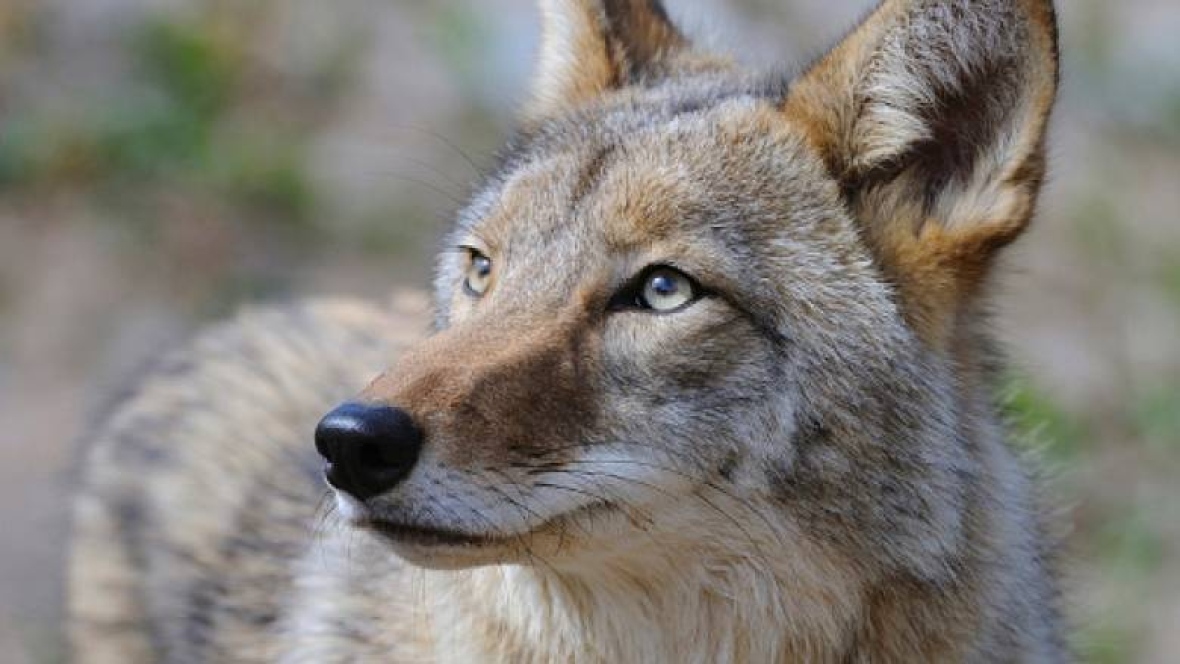
A new predator
The new predator showed up in the 1980s. Some coyotes were already in New Brunswick, but the newcomer, while similar, was much bigger and eventually much more common.
“I caught one,” said Paul Turmel, a coyote trapper for more than 35 years, who remembers his first experience with an eastern coyote. “And at that time the province called them brush wolves.”
Turmel, considered one of the top trappers in New Brunswick, was fresh out of high school and running a trapline outside Fredericton. The brush wolf he trapped went to the province so biologists could study exactly what it was.
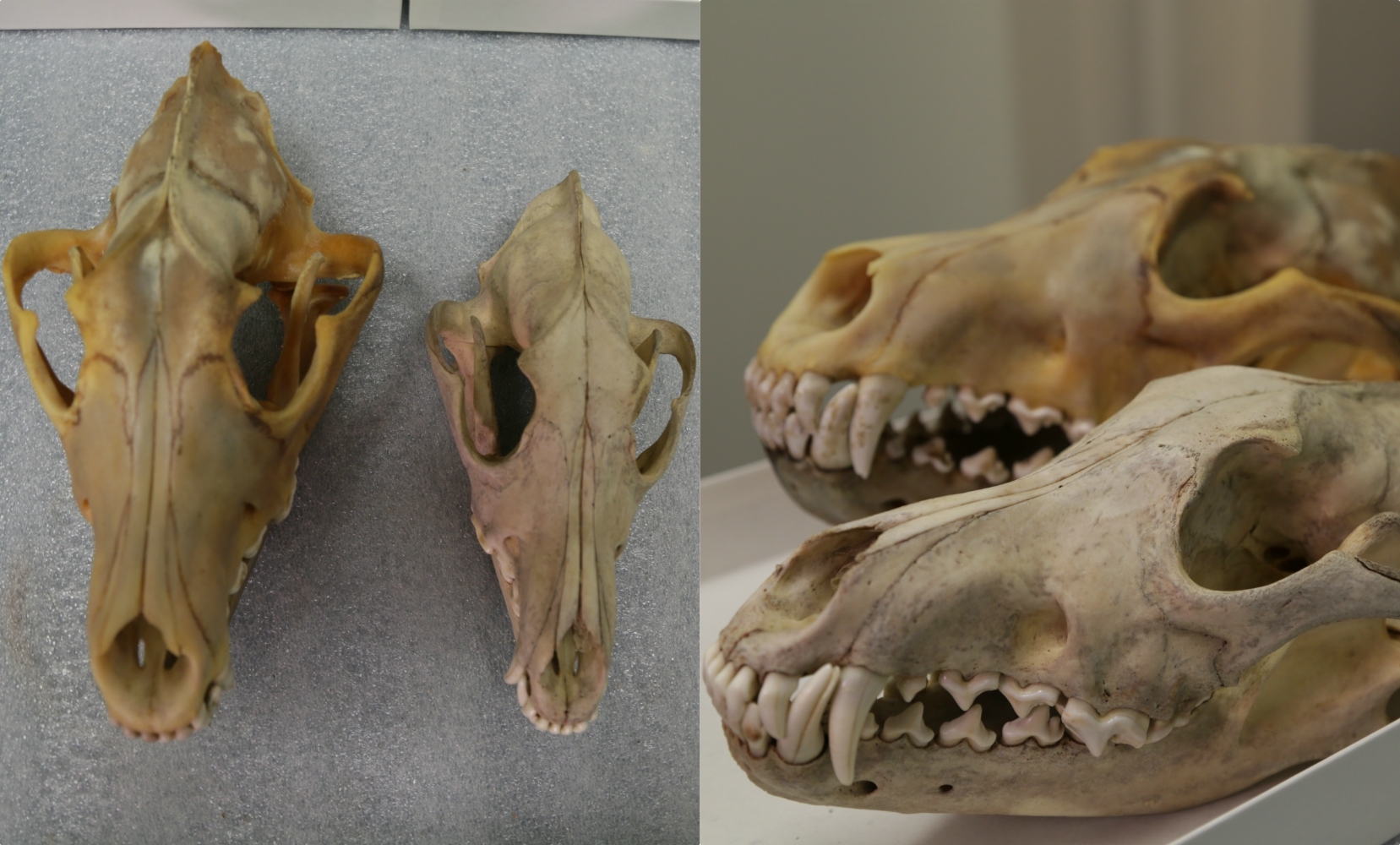
“I caught it in a fox trap and it was really a big animal.”
The arrival of the animal in New Brunswick attracted a lot of media attention, Turmel said.
“They were sort of just infiltrating the province. They were here, but they weren’t in huge numbers. But they were starting to spread.”
With careful study and examination of the brush wolf’s DNA, scientists determined this new predator was a cross-breed — of three different species.
Who are you?
The origin story of the hybrid begins with the settling of Eastern Canada.
The eradication of wolves left space in the ecological landscape for coyotes, which could now move into the area without having to compete with the much larger canine.
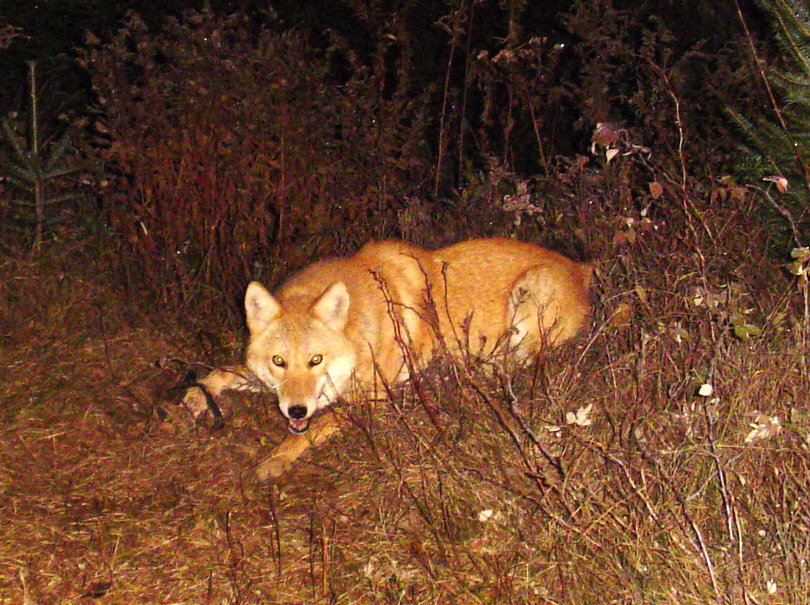
Soon only small parcels of wolves were left in portions of Eastern Canada. They included the Algonquin wolf, also known as the eastern wolf, which was found in what is now Algonquin Park.
The shift left the door open for coyotes from the west to move into lands that used to be off-limits because of territorial wolves.
That push east by western coyotes included a few meetings between the roaming population and the depleted wolf population.
And a few rare unions between the two species led to the incredibly successful population of hybrid animals we know now, according to Brent Patterson, a biologist working with the wolf packs at Algonquin Park.
“All of Eastern Canada and the northeastern United States was really colonized by a relatively low number of founders, which went on to breed and reproduce prolifically and spread,” said Patterson, who is also a professor at Trent University in Peterborough, Ont.

“So a relatively small number of interspecific hybridization events led to this large population of hybrids that we see today.”
Somewhere along the line, domestic dogs were also thrown into the mix, although to a lesser extent, according to genetic studies.
On average, the genetic makeup of the eastern coyote is 65 per cent coyote, 25 per cent wolf, from possibly two different species, and 10 per cent dog, said Javier Monzon, an assistant professor of biology at Pepperdine University in Malibu, Calif.
“That average is based on my assessment of 437 individuals across northeastern North America, from Ohio to New England to a few individuals in southern Quebec.”
Over four decades, the eastern coyote has come to thrive in New Brunswick.
Those who work closest to the Eastern coyote describe it as a survivor and detail its uncertain role in the province today.
Thriving near humans
The second largest predator, dwarfed only by the black bear, the animal goes by many names reflecting its origins: coydog, coywolf, eastern coyote and northeastern coyote.
New Brunswickers just call them coyotes. For this article, they’re eastern coyotes.
Biologists don’t consider them a new species.
“Being a hybrid, and being capable of reproducing with both of its parental species, the coyotes and the wolves, that means it’s not reproductively isolated and almost all of us that work on the species do not recognize it as a distinct species,” said Monzon.

Unlike the wolf that came before it, the eastern coyote has prospered in the presence of humans.
Now found in every part of the province, it is not limited to isolated forests. Villages, towns, cities — regardless of where you live in New Brunswick, at any given time it’s likely you’re just a few kilometres from the nearest eastern coyote.
“They are all over the province,” said Jonathan Cormier, the furbearer management biologist with the Energy and Resource Management Department.
“You can find them in the densest forest to downtown Fredericton. They are opportunists. They are adaptable. They can exist in small urban parks, as well as large contiguous forest.”
When one is spotted in an urban area, it quickly makes the rounds on social media, along with warnings to “protect your children” and “watch your pets.” House cats and occasionally dogs are known to be preyed upon by the opportunistic eastern coyote.

A case for hunters
Occasional attacks on humans do happen, and they have been deadly, but the vast majority of eastern coyotes slip by people unnoticed.
One group, however, prides itself on keeping the eastern coyote in check.
The population of whitetail deer in New Brunswick has plummeted about 70 per cent in the last 30 years, according to the province.
Experts argue that several factors are responsible for the decline, including forestry, reduction of habitat, harsh winters, and the introduction of the eastern coyote.
But for some hunters, the eastern coyote is the prime suspect, and saving the deer herd justifies killing coyotes at every opportunity.
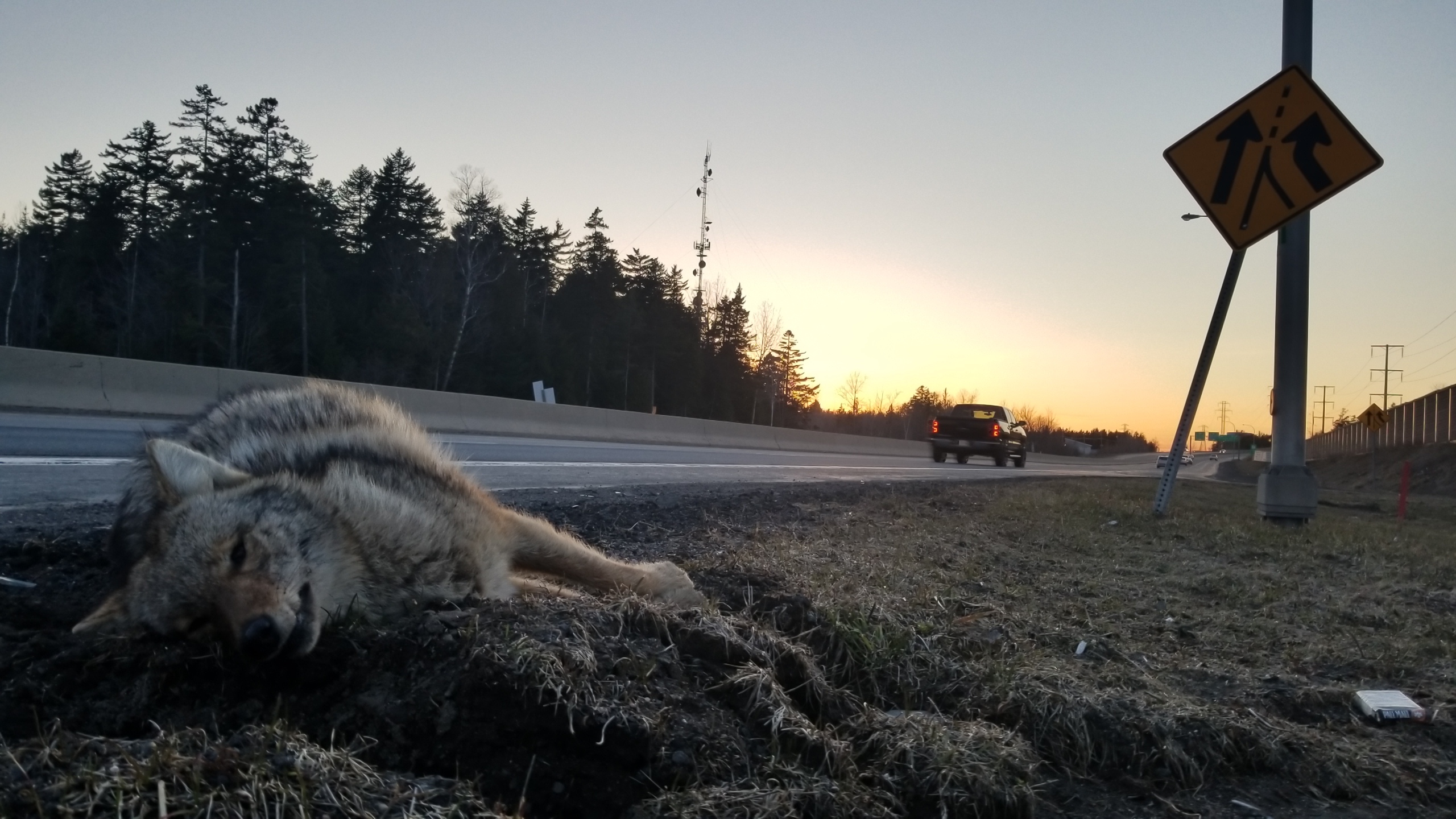
Some social media posts show dozens of carcasses, sometimes stacked like firewood. Most hunting licences in New Brunswick grant the ability to also harvest coyotes.
But the coyotes’ actual impact on deer isn’t clear, according to the province.
“Coyotes have gotten a bad rap in the province,” Cormier said.
“They moved in here in really greater numbers starting around the 1970s. The 1990s is when the population really started to increase. And because of that and their habit of preying on deer, they have gotten a bad rap.”
Research is underway at the University of New Brunswick to determine the severity of the coyote's impact on the deer population, he said.
Turmel said trappers and hunters are predators too, and they have a responsibility to manage the hybrid.
A look at the origins of the coywolf, or eastern coyote, as presented by CBC's The Nature of Things.
But even though he believes coyotes absolutely affect the whitetail population, Turmel doesn’t see them as the number one killer of deer.
“Number one is habitat, that’s absolutely the most important one,” he said, referring to territory lost mainly to forestry.
“Then winter severity is the next one, in my mind.”
Coyotes would be third, Turmel said, rounding out his list with hunters, poachers and vehicles as the next largest killers of deer.

Lifetime learners
He credits hunters for keeping coyotes from running rampant to a certain degree, but he does so with a great deal of respect, almost admiration, for the animals and their ability to learn.
“The potential of a coyote is the same as your house dog, or more,” said Turmel. “Some dogs are really good at smelling, some dogs are good at tracking. I think coyotes are good at it all.
‘If they’re young they’re not that smart. But they get through that first winter, they are a lot smarter.”
“The old ones are hard to catch.”
Despite some hunters’ gusto for killing coyotes, Turmel believes the animals will never be eliminated. And that’s echoed in studies supervised by Patterson.
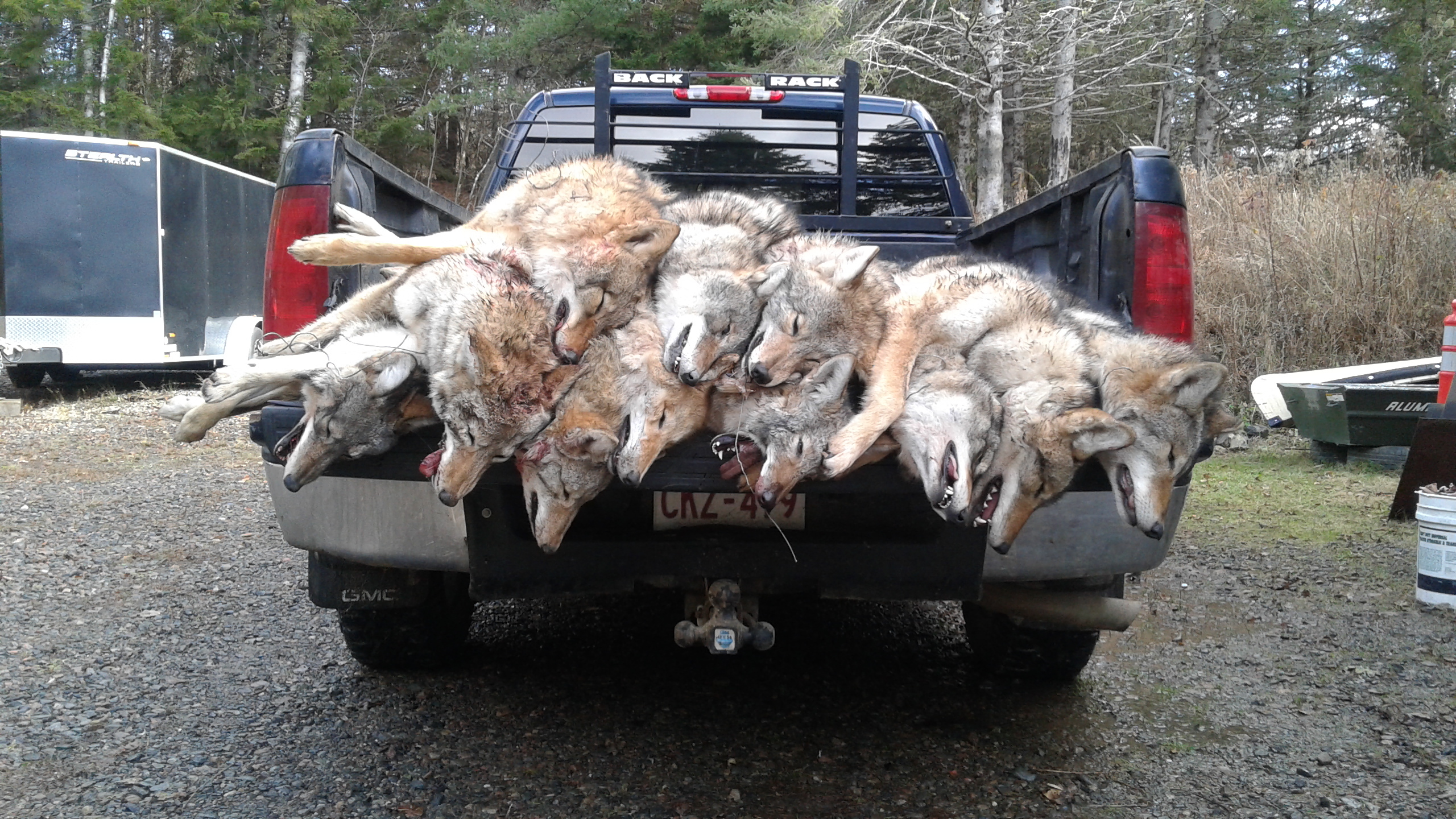
“Even if more than half the packs or territories are completely wiped out each year, the remainder are more than able to fully repopulate the population every year,” he said.
Patterson paraphrased a coyote researcher’s thought years ago when the population first started to spread: “If there was a nuclear holocaust, or something, coyotes, rats and cockroaches might be the only three animals alive left on the Earth.”
Provincial biologists agree the animal has a healthy breeding population, and each female can have two to eight pups a year, said Cormier.
“In New Brunswick, we believe the average is around four pups a year.”

Future together
He estimated there are at least 10,000 to 15,000 in the province, but more research might suggest a higher figure.
While humans and wolves have always been competing predators, the coyote has been considered a nuisance more than a threat. That attitude is something the eastern coyote benefits from.
In New Brunswick, the hunting population is on the decline. By 2015, fewer than 10 per cent of residents actively hunted.
And as hunters have declined in recent decades, the eastern coyote population has shot up, statistics that bode well for the predator’s future here.
“They are here to stay,” said Turmel.
